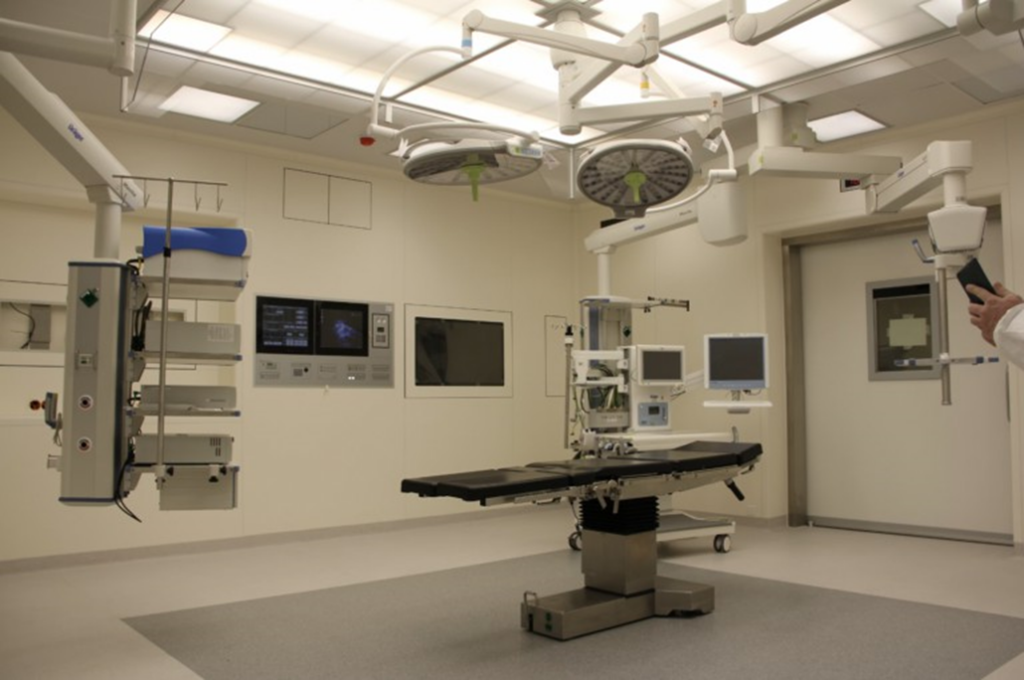Elizabeth Schanz

A pair of Grand Rapids-area public charter schools have integrated a curriculum focused on health sciences that will prepare students for employment opportunities or post-secondary education.
Lighthouse Academy’s South Campus as well as Hope Academy of West Michigan in Grand Rapids have integrated the NAF Academy of Health Sciences, opening up new programming that aims to intertwine lessons and practical experiences and make connections to professionals in the field.
In its inaugural year, Lighthouse Academy has a cohort of 14 students who will be a part of the academy during their time at the school. Lighthouse Academy serves under-resourced students, including those who have been expelled, suspended long-term, court affiliated, or
need more intensive special education services. About 60% of Lighthouse students are minorities and nearly all of the students are from “economically disadvantaged” households, according to school officials.
“Our aspirational goal is to give as many students as possible, in one hand a diploma and then in the other hand something that helps them to a career that’s going to be beyond making it check to check,” said Heidi Cate, superintendent of Lighthouse Academy. “That’s going to help them to have a fairly good life.”
Various backgrounds often lead Lighthouse students down nontraditional and nonlinear educational pathways. In an effort to help create a positive pathway for students beyond high school, Cate looked for programs that could enhance and advance students’ futures.
NAF is a New York City-based nonprofit that creates small, focused learning communities that fit within and enhance high school systems, according to its website.
Cate said she was drawn to NAF because the programming set itself apart in three key areas: the available curriculum, connections to national partners in health science fields in dental hygiene and diagnostic medical sonography, and work-based learning.
The inaugural cohort of the health science program at Lighthouse was chosen because of the students’ readiness for the courses and their aptitude and interest in the health sciences field.
These students will learn from NAF’s health science curriculum with standardized courses like anatomy and physiology, and specialized courses like biotechnology, said Reedy Wade, vice president of academy engagement and impact for NAF.
Additionally, NAF offers its partnering school resources like health careers exploration and a focus on “authentic” projects in which students address relevant issues guided by experts in the field.
“In this academy of Health Sciences, (students) take academic courses, and then we align that with work-based learning activities such as guest speakers, resume writing workshops, informational interviews, mock interviews, skill builder workshops, site visits and then internships that prepare them for futures in this industry or in the sector,” Wade said.
Each NAF academy has an advisory board in which 80% of members are represented by industry practitioners and professionals who offer a connection and opportunities to the local industry. Lighthouse’s advisory board, which is still being developed, so far includes members from the Urban League of West Michigan, Ferris State University and Exalta Health.
“We get those industry members to tell us, ‘Here’s what’s important to our industry right now
… here is what we need to develop with our young people, with our students in the high schools,’ so that they are prepared and equipped to earn certifications that can lead to immediate hire after high school,” Wade said. “That also gives them a pretty healthy resume if and when they pursue post-secondary education.”
Lighthouse Academy South campus joins 97 other health sciences academies across the country. NAF also offers academies in other fields — such as engineering, finance, and hospitality and tourism — that total 619 nationwide. The Lighthouse Academy is the third school with an NAF program in West Michigan, joining Hope Academy of West Michigan with a health sciences program and Ottawa Hills High School, which has a hospitality and tourism academy.
Bringing an NAF program into a school costs $12,000 for a year of planning with a dedicated portfolio manager, and then a $2,000 annual membership fee that covers access to resources and direct support. Long-term funding for the NAF Academy of Health Sciences comes from Lighthouse’s overall budget, Cate said.
Creating a pipeline
Implementing the NAF Academy of Health Sciences comes at an opportune time as the state is slated for growth in health care fields, Wade and Cate both said. Grand Rapids also is recognized as a health care hub for its cluster of health systems as well as research-based institutions.
“There’s an economy of scale, I think, around medical professions now from all over Michigan for specialty areas, and then that creates entry-level health care job opportunities, all the way up to the top,” Cate said.
Since the NAF Academy of Health Sciences is in its pilot year with Lighthouse Academy South Campus, Cate hopes to continue to mold the opportunities from NAF with the complex needs of students who may return to the public school system or be in and out of Lighthouse.
Ultimately, she hopes to equip students with certifications and skills they can take with them beyond their time in school.
“We are weeks into this program. … For me, the biggest piece is really structuring this so we keep our eye on the ball that this is a priority for our school and our students,” Cate said. “We need as many workers as we can get. We say these kids do have talents. How do we get them on the right pathway so that they can be using their gifts to help us build these things that we all need?”


